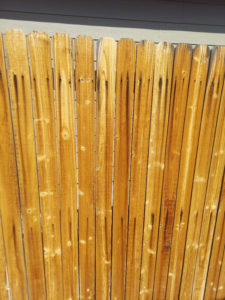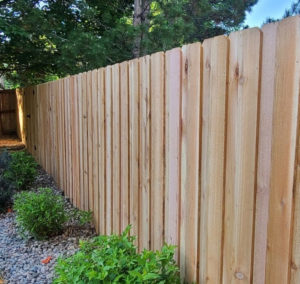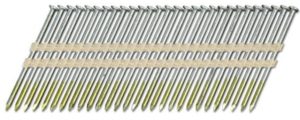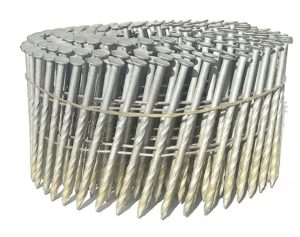When you’re planning your fence project and you envision a lovely wooden fence on your property, what you’re probably not picturing is a fence stained with rust teardrops . . .
Many homeowners find themselves with a fence that is ‘crying’ years after installation, and it completely degrades the look of the fence. So, what causes a fence to ‘cry’ tears of rust? And why do you see it on some fences and not others?
Nailing Down the Basics
You have probably seen fences with rust streaks like the one below.

The reason this happens all comes down to the type of nail used. This one decision will make the difference between a nice-looking, rust-free fence, and one that cries more and more as time goes on.
When a fencing contractor wants to cut their costs they may use a cheaper nail. This lower cost nail results in lower quality: it will eventually corrode and rust when exposed to moisture over time. You may see the rust streaks a year or two after your fence installation, depending on the moisture where you live, how often your sprinkler hits the fence, etc.
Once the rust is showing on the fence, it can’t be easily cleaned off. The fence would have to be re-stained, or significantly sanded, both of which would take a lot of time and effort.
The simple prevention for a rust-streaked fence is to go with a quality nail from the beginning. We use hot-dipped, galvanized nails on our fences that will not rust out. We want to ensure a quality fence that is nice to look at for many, many years.

Quality Nails Keep Your Fence from Blowin’ in the Wind
If you’ve lived in Colorado for longer than six months, you may have noticed that we get some pretty strong winds coming off the Rocky Mountains and foothills, at different times throughout the year. A quality fence can stand up to most winds, but there are a few key components to that strength, and one of them is again, the type of nail used.
Just as we use a high-quality galvanized nail to prevent rusting, we also utilize screw shank framing nails to provide a superior finished product. These nails have coils around them for resistance once they are driven into wood. Many contractors use a cheaper, smooth nail, and the customer could end up paying for this down the road. Fence panels will come off the post easier, especially in high winds, because the nail is smooth and doesn’t properly hold in the wood.


Quality Materials Equal an Attractive and Sturdy Fence
We believe in only using quality materials to ensure a lasting and beautiful product. If you are interested in cedar fence installation, contact us to receive a free estimate.
